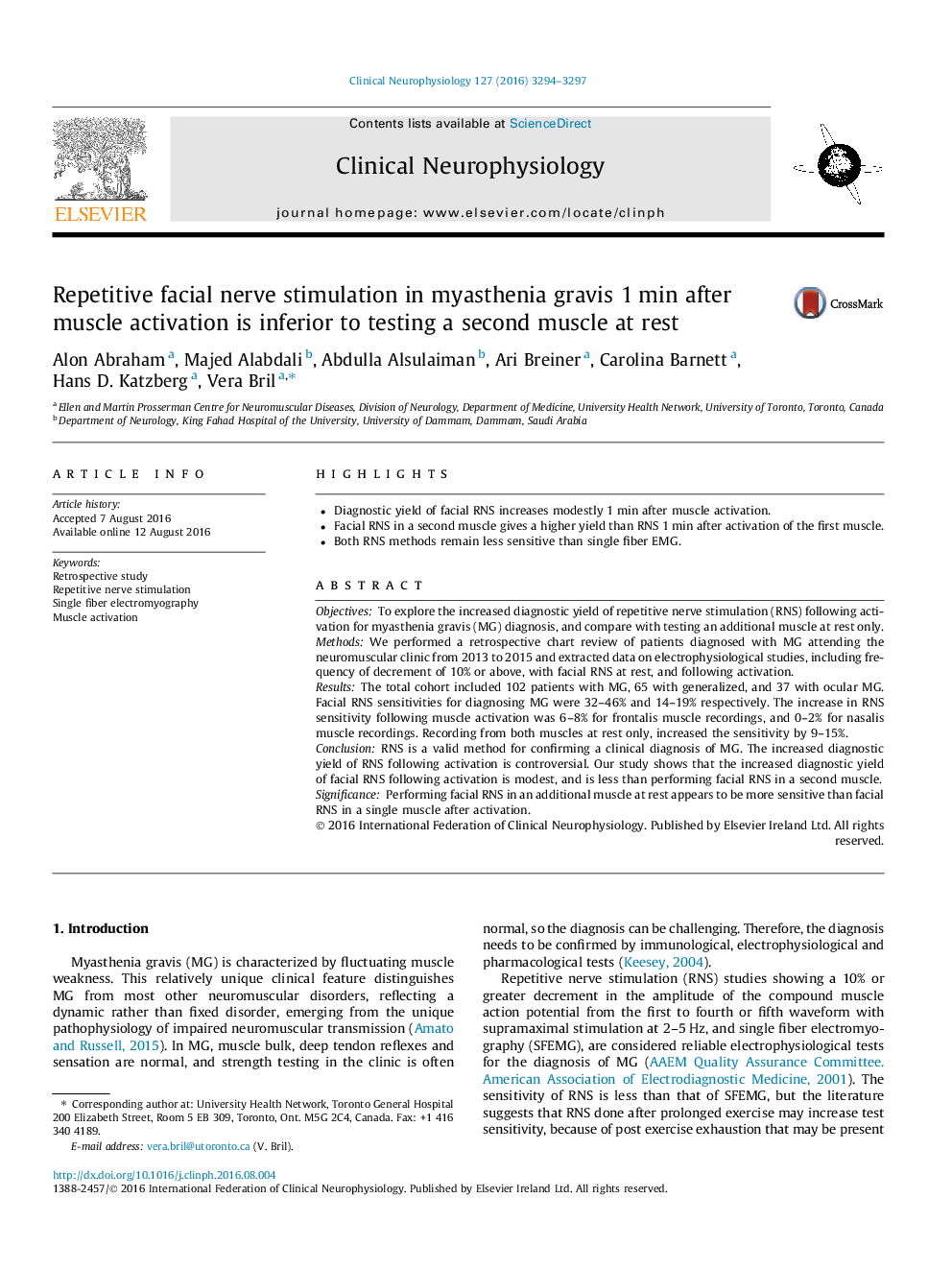| Article ID | Journal | Published Year | Pages | File Type |
|---|---|---|---|---|
| 5627880 | Clinical Neurophysiology | 2016 | 4 Pages |
â¢Diagnostic yield of facial RNS increases modestly 1 min after muscle activation.â¢Facial RNS in a second muscle gives a higher yield than RNS 1 min after activation of the first muscle.â¢Both RNS methods remain less sensitive than single fiber EMG.
ObjectivesTo explore the increased diagnostic yield of repetitive nerve stimulation (RNS) following activation for myasthenia gravis (MG) diagnosis, and compare with testing an additional muscle at rest only.MethodsWe performed a retrospective chart review of patients diagnosed with MG attending the neuromuscular clinic from 2013 to 2015 and extracted data on electrophysiological studies, including frequency of decrement of 10% or above, with facial RNS at rest, and following activation.ResultsThe total cohort included 102 patients with MG, 65 with generalized, and 37 with ocular MG. Facial RNS sensitivities for diagnosing MG were 32-46% and 14-19% respectively. The increase in RNS sensitivity following muscle activation was 6-8% for frontalis muscle recordings, and 0-2% for nasalis muscle recordings. Recording from both muscles at rest only, increased the sensitivity by 9-15%.ConclusionRNS is a valid method for confirming a clinical diagnosis of MG. The increased diagnostic yield of RNS following activation is controversial. Our study shows that the increased diagnostic yield of facial RNS following activation is modest, and is less than performing facial RNS in a second muscle.SignificancePerforming facial RNS in an additional muscle at rest appears to be more sensitive than facial RNS in a single muscle after activation.
